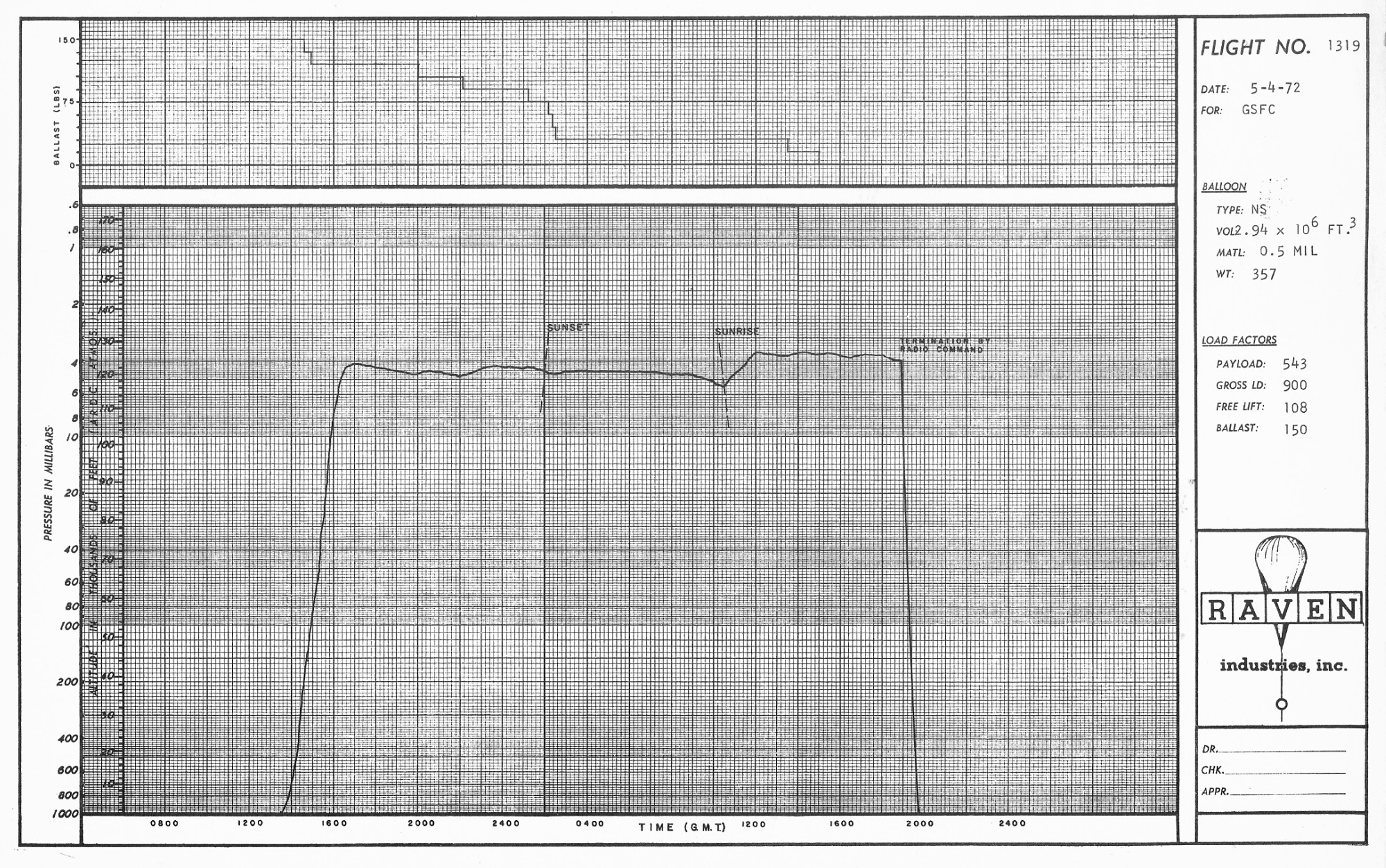Purpose of the flight and payload description
The purpose of the experiment was an intercalibration flight to compare four different satellite spare detectors in order to determine relative responses of IMP-A, OGO-B, OGO-E, and IMP-H electron experiments using cosmic ray secondary electrons at balloon altitudes (95 to 125,000 feet).
The gondola housing the detectors weighed 282 pounds, measured 20 inches in diameter, and was approximately 60 inches tall. It formed a compact package which included the Raven control instruments, ballast hoppers, and dual back-up termination timers.
Details of the balloon flight

Balloon launched on: 5/4/1972 at 13:50 UTC
Launch site: Joe Foss field, Sioux Falls, South Dakota, US
Balloon launched by: Raven Industries Inc.
Balloon manufacturer/size/composition: Zero Pressure Balloon Winzen 2.940.000 cuft (Stratofilm 0.5 mil)
Flight identification number: Raven Nº 1319
End of flight (L for landing time, W for last contact, otherwise termination time): 5/5/1972 at 18:57 utc
Balloon flight duration (F: time at float only, otherwise total flight time in d:days / h:hours or m:minutes - ): 29 h 55 m
Landing site: 3 miles SW of Fergus Falls, Minnesota, US
Campaign: SKYHOOK 72
Payload weight: 543 lbs
The balloon was launched by Dynamic method at 13:50 utc on May 4, 1972 from Joe Foss Field, in Sioux Falls, South Dakota. After a nominal ascent the balloon reached an altitude of 127.300 ft. The flight was terminated at 18:57 utc on May 5, 1972 and the payload landed undamaged three miles southwest of Fergus Falls, Minnesota. Total flight time was 29 hours and 55 minutes.
External references
- Balloon Flight Record Nº 43 National Center for Atmospheric Research, Summer 1972
- Skyhook Churchill 1972 Interim Report, Raven Industries, 1973
5679If you consider this website interesting or useful, you can help me to keep it up and running with a small donation to cover the operational costs. Just the equivalent of the price of a cup of coffee helps a lot.

